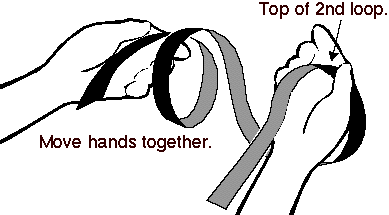
 I've always wondered why my cables are all tangled and dangling from a coat hook on the back of my office door. Now I know. I was reading this page about training courses for roadies (or 'stagehands' as they like to be called). It quickly becomes clear that roadies' main issues are: a) Incorrect cable rolling b) Abuse of flight case castors c) Lewd language d) Body odour.
I've always wondered why my cables are all tangled and dangling from a coat hook on the back of my office door. Now I know. I was reading this page about training courses for roadies (or 'stagehands' as they like to be called). It quickly becomes clear that roadies' main issues are: a) Incorrect cable rolling b) Abuse of flight case castors c) Lewd language d) Body odour.
I had no idea about the politics surrounding cable rolling: "Our company rolls all cables in the circular method - thumb and forefinger style. However, we also teach over-and-under, because stagehands also need to know how to do this for other customers.". I was baffled by this, and unfortunately this explanation didn't help. Finally, I found this page from the Sound Institute which promises "nice-looking, twist-free cables that provide fast set up". I wonder if someone who can do this could post it on YouTube, a bit like this...
UPDATE: Thanks to Kåre, my dream has come true: Here is a video explaining how to wrap cables correctly, using the 'over/under' technique.
 I've always wondered why my cables are all tangled and dangling from a coat hook on the back of my office door. Now I know. I was reading this page about training courses for roadies (or 'stagehands' as they like to be called). It quickly becomes clear that roadies' main issues are: a) Incorrect cable rolling b) Abuse of flight case castors c) Lewd language d) Body odour.
I've always wondered why my cables are all tangled and dangling from a coat hook on the back of my office door. Now I know. I was reading this page about training courses for roadies (or 'stagehands' as they like to be called). It quickly becomes clear that roadies' main issues are: a) Incorrect cable rolling b) Abuse of flight case castors c) Lewd language d) Body odour.